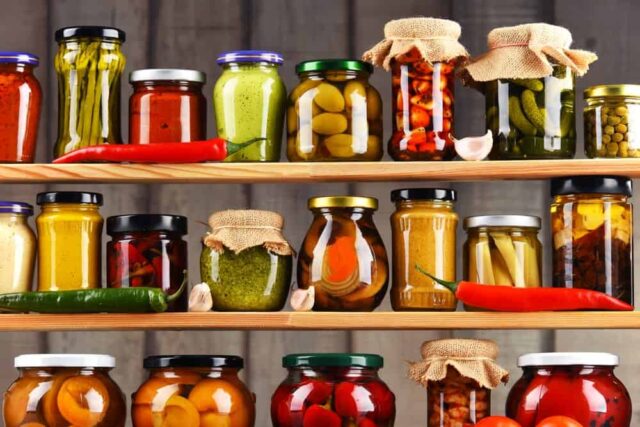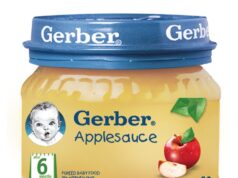The which preservation technique involves heat processing a liquid is a preservation technique that uses heat to kill off bacteria. It is also known as pasteurization.
Which method of food preservation includes heating items to a safe temperature and then cooling them down quickly? Pasteurization may be the kind of preservation method employed in the sentence above. This technique involves heating in order to destroy microorganisms that may pose a threat to an individual’s health.
Furthermore, which preservation method entails heating food to a safe temperature and then allowing it to cool quickly?
Answer: Pasteurization is a food preservation method in which the food is heated to a temperature below 100 degrees Celsius and then rapidly frozen to prevent germs from growing or getting into the food once the heating procedure is completed.
What preservation method also tries to get rid of moisture? Dehydration or drying of foods is a preservation method that tries to eliminate moisture. Many kinds of food, such as meat and fish, may be stored indefinitely by eliminating moisture. The development of microbes in food is hampered in this manner.
In light of this, which preservation method involves both heating and cooling?
Pasteurization. Pasteurization is the process of utilizing heat to kill pathogenic (disease-causing) bacteria, inactivate spoilage-causing enzymes, and decrease or eliminate spoiling microorganisms in food.
What is the danger zone for temperature?
(40 °F – 140 °F) “Danger Zone” Bacteria grow most quickly at temperatures between 40 to 140 degrees Fahrenheit, doubling in number in as little as 20 minutes. The “Danger Zone” is the name given to this temperature range. Food should never be left out of the refrigerator for more than 2 hours.
Answers to Related Questions
What is the most frequent method of chilling?
Commercial food wholesalers are the most frequent users of chilling. EXPLANATION: Commercial food distributors often utilize cooling to keep food fresh for a long time. Microorganisms may be destroyed or deactivated by cooling without affecting the food’s organoleptic qualities.
Why is it critical for food servers to be educated in food component knowledge?
Food servers must be educated to recognize food components since they will be required to assist in the kitchen during busy times. Customers with food sensitivities will need assistance. When working with hazardous foods, they will need to be cautious.
Is it necessary for food servers to be educated on food ingredients?
Food servers must be educated on food ingredients since they will be required to assist clients with food allergies. Which method of food preservation includes heating items to a safe temperature and then cooling them down quickly?
What is the definition of food preservation?
Food preservation slows the oxidation of lipids that produce rancidity and inhibits the development of germs (such as yeasts) or other microbes (although other techniques work by adding benign bacteria or fungus to the food).
What method is used to eliminate moisture?
Dehydration
What does cross contamination look like in practice?
Bacteria from other foods may infect your meal. Here are some instances of cross-contamination between foods: Meat drippings from raw meat kept on the top shelf of a refrigerator may drop onto cooked vegetables put on the bottom level. On a grill, raw chicken comes into contact with a steak that is being cooked.
What is the most effective method to avoid foodborne illness?
What Is the Best Way to Prevent Poor Food Safety When Serving?
- Handwashing. Handwashing is ranked first because it is the most effective method to avoid foodborne diseases.
- Keep your distance from the danger zone.
- Properly store food.
- Cook to the Correct Temperatures
- The Right Temperatures for Chilling
- Utensils need to be rinsed.
- Address Food Allergies Correctly.
What is the most important factor that influences customer loyalty?
High food safety standards, delicious cuisine, friendly personnel, and good records are all direct reasons of consumer loyalty, but high food safety standards are the most direct cause of all.
Which sanitizer doesn’t include copper?
CHLORINE BASED SANITIZERS are a kind of sanitizer that you should avoid using. Because chlorine reacts with silver and copper, your utensils and equipment will be harmed. Chlorine reacts with silver to produce silver chloride, and with copper to produce copper II chloride.
What food preservation technique includes heating to 160°F for 15 seconds?
Thermization includes heating milk for 15 seconds at 145–149 °F (63–65 °C), while pasteurization requires heating milk for 15 seconds at 160 °F (71 °C) or for 30 minutes at 145 °F (63 °C).
How would you store grains to avoid cross-contamination?
To minimize the danger of cross-contamination, store grains in a cool, dark, dry location with temperatures between 62°F and 68°F. This location would offer ideal conditions and temperatures for grain storage. An extra oxygen absorber may be added to the bucket if desired.
When it comes to pest baits, where should they be used to avoid chemical contamination?
The appropriate placement of surface bait stations is to put rodenticide baits into rat burrows to avoid chemical cross-contamination. For individuals who have neophobia and avoid bait stations, this may have a fast outcome and rapid bait absorption, as well as successful therapies.
Frequently Asked Questions
Which prevention technique involves heating foods to mild temperatures then cooling them down immediately?
Is important that food servers are trained to know food ingredients because of what?
Food servers are trained to know food ingredients because of what is the best for their customers. This is due to the fact that some people may have allergies or be sensitive to certain foods, and it would be in the servers best interest to make sure they know what theyre serving.




